| |
A Different Kind of Garden
Welcome to Our Botanical View of Southwest Florida
|
Located in the area between the Peace River to the south, and the Myakka River less than two miles to the west,
this small portion of Florida is neither south Florida nor central Florida, yet has parts of both. |
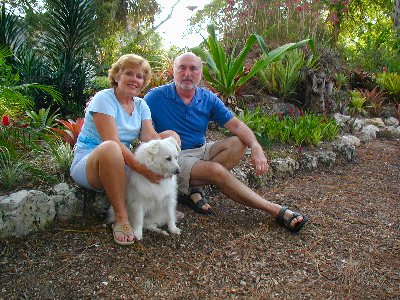
|
|
Too far from the warm Gulf of Mexico to be protected from winter cold, Crape Myrtles and Magnolias do better than the Yellow Poinciana and Royal Palms, yet all of these have lived together in our neighborhood. The Royal Poincianas do not do well here, even though a Royal Palm managed to grow to a height of well over 25 feet before it fell victim to disease.
The bromeliads and antheriums brought from Miami have struggled to adapt, while Crape Myrtles brought from Daytona survive better than those a few miles away on the other side of the Peace River. Only the indigneous wax myrtles, groundsel, lantana, cabbage palms and the ever present palmettos and Live Oaks flourish without attention. Slash pines share the 80' by 120' lot with palmettos, several live oaks and a wax myrtle in the center of the property. The soil tends to runs alkeline and is an odd mixture of clay areas interspersed with coarse sand! Some invasives, such as the Brazilian Pepper, for years called "Florida Holly", thrive better than some fertilized plants.
Please enjoy our "odd little garden"
|
Welcome to our Garden
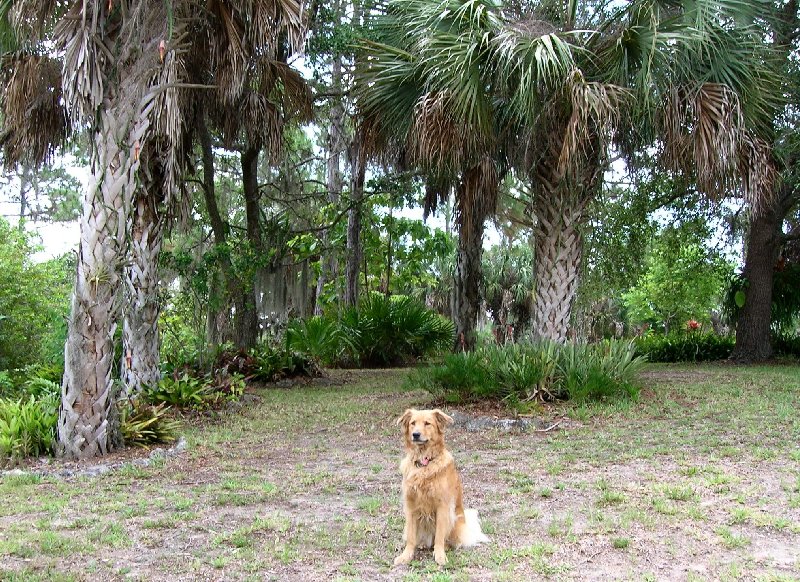
Taz, our Golden Retriever, keeps an eye out at the front of the garden for squirrels and an occasional Bobcat.
Click here for a short YouTube video of a Bobcat (Felis Rufus Floridanus) taken as it watches squirrels in front of our house.
|
|
|
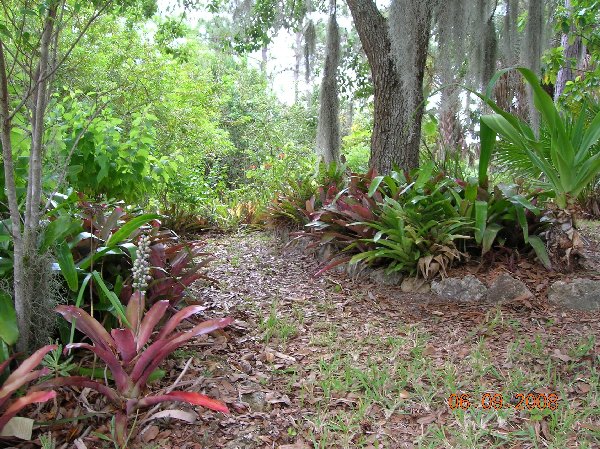
Enter on the left. It really isn't all that big.
|
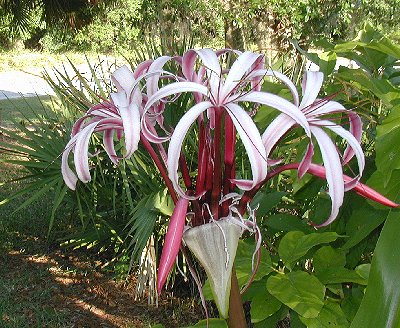
(RIGHT)
A purple Crinum Lily,
(Crinum Asiaticum) shows off in April.
The flower has to be supported or it collapses under its own weight.

(LEFT)
A well shaded bromeliad bed with a variety of plants
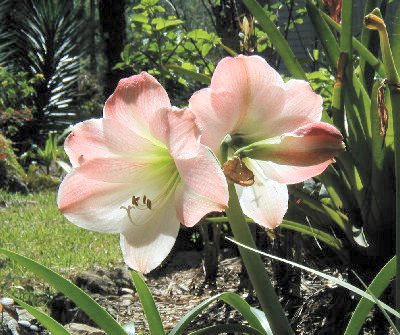
(RIGHT)
An Amaryllis
(Hippeastern Hybrids) is a sure sign of spring. |
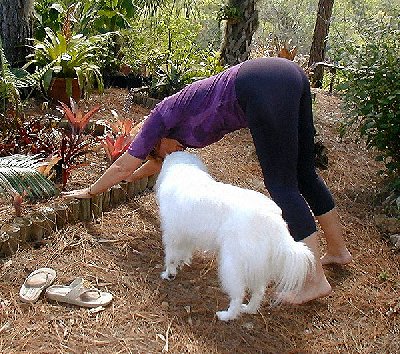
Daisy gives expert advice on the yoga pose, "Downward facing dog"
|
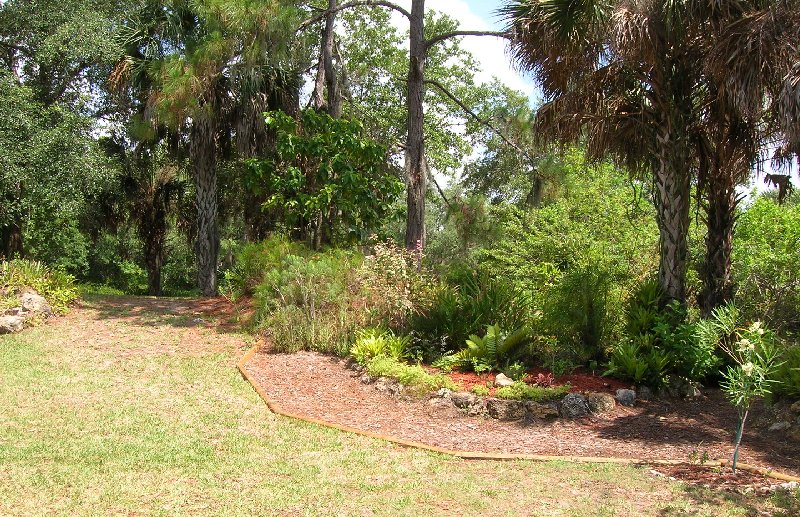
(RIGHT)
Looking back toward the street from the lawn, or sunny side of the ridge.
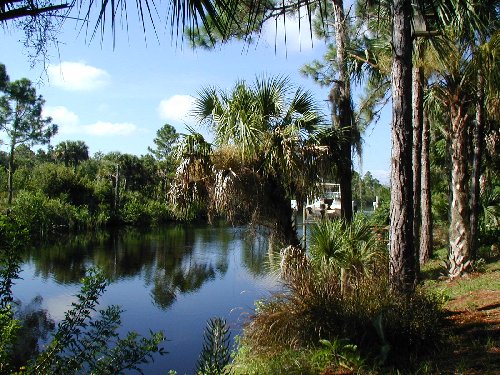
(LEFT)
The Jupiter Waterway at the rear of the property. The waterway runs to the Myakka River, about two miles from the garden
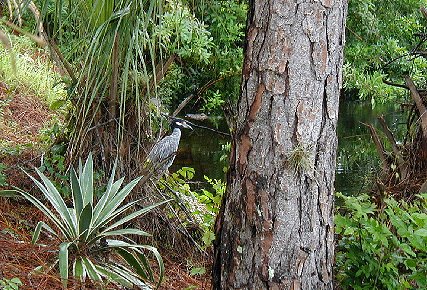
(RIGHT)
A Louisana Night Heron and an alligator at the water's edge.
Look closely, the alligator is lying with his body in the culvert only several feet upstream from the heron! Only its head protrudes into the waterway.
An Agave Angustifolia sits between a young palmetto and a slash pine
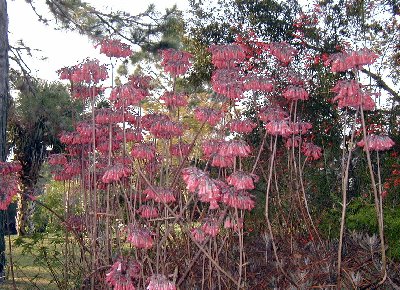
Another winter kalanchoe, Kalanchoe Tubiflora, adds winter color before the first frost, usually blooming profusely from early December until late January, or until nipped by frost.
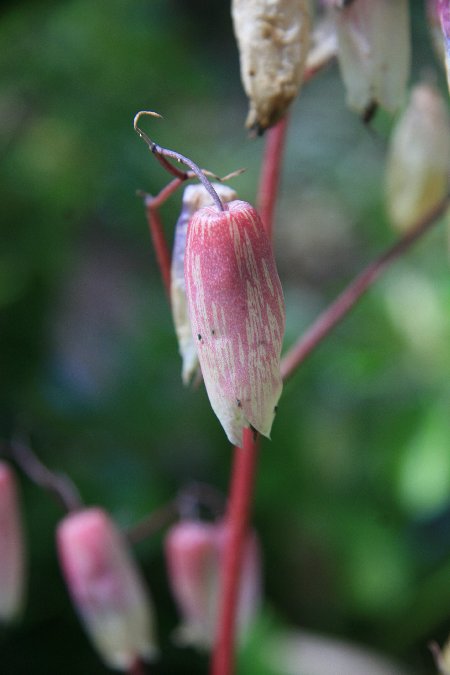
(RIGHT)
Another, as yet unidentified, Kalanchoe. Photo by Troy Heidesch
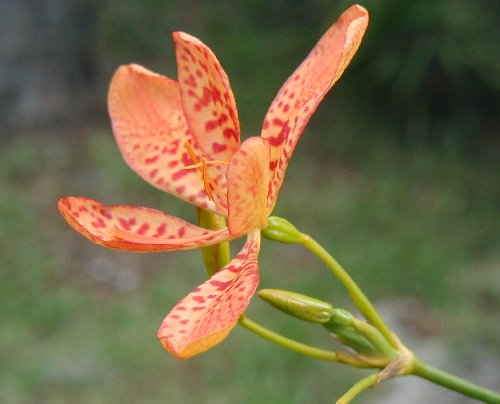
(RIGHT)
A spring blooming day lily
|
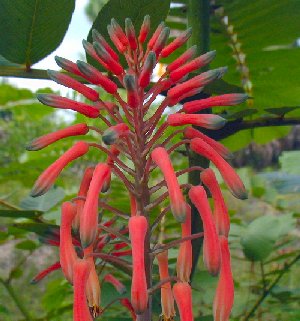
An Aloe Variegata (Thanks, Sy!) in full bloom. The plant in the background is a Cassia, also known as a Candlebush |
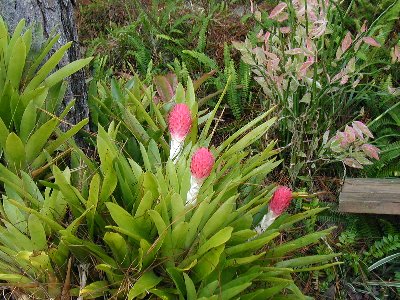
A type of Quesnelia Testudo a native of Brasil, one of the few Bromeliads beside the epiphitics, such as the native Spanish Moss and Ball Moss, that flourish here.
This late winter bloomer (at least in our garden) with its brilliant pink inflourences with their imbedded purple dots are a sure sign that spring is on its way |
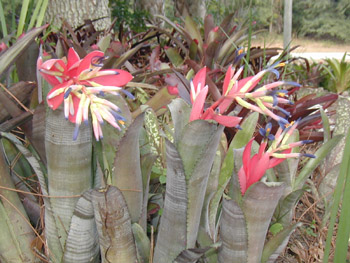
(LEFT)
Having survived 26 (Farenheit) degree weather and an infestation of scale, the battered bromeliad (Billbergia Euphemiae) shows it's beautiful inflouresence.
|
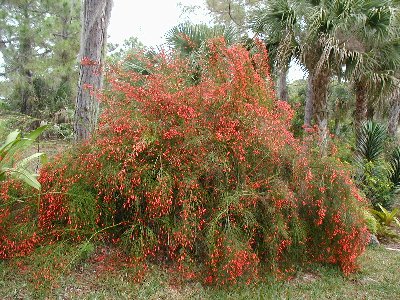
(RIGHT) The Japanese Firecrackers that shroud the earthen mound show their spring colors
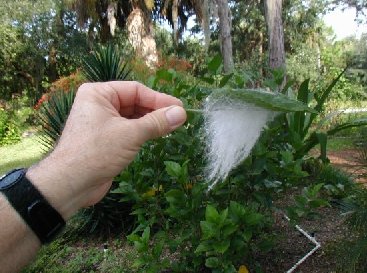
Florida gardening always has it's share of interesting challenges... |
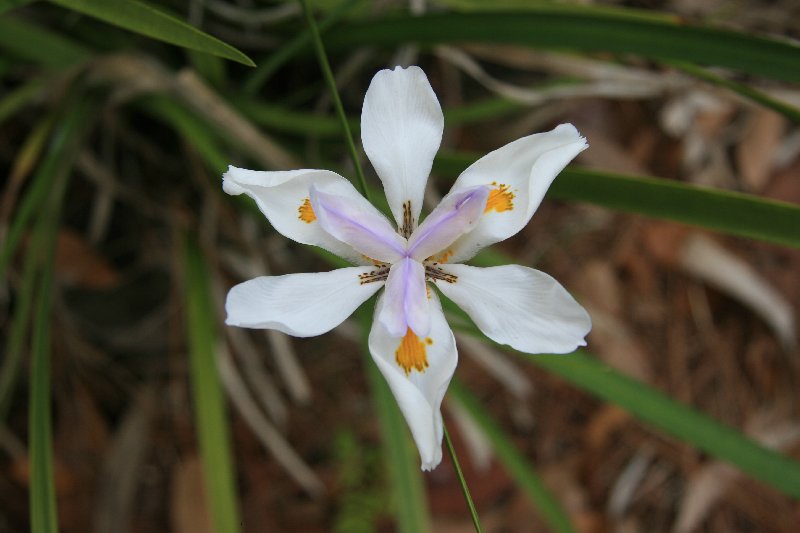
...and its rewards, such as this African Iris. Photo by Troy Heidesch, our daughter's husband.
|
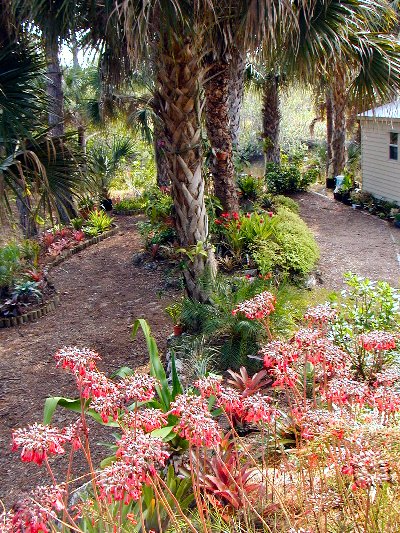
The mound was used a buffer between the open and the shady areas.
The darker ground cover in the foreground is Mexican Heather, while the lighter Pilea was used on the bed in the back ground. The plants in the foreground are Kalanchoe Tubiflora |
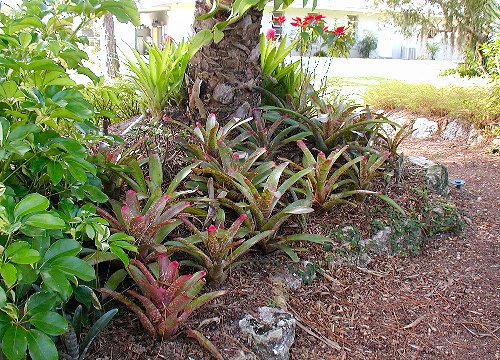
Fingernail Bromeliads Neoregelia Marcon to the right of a miniature schefleria and in front of another cluster of Quesnelia Testudo. |
|
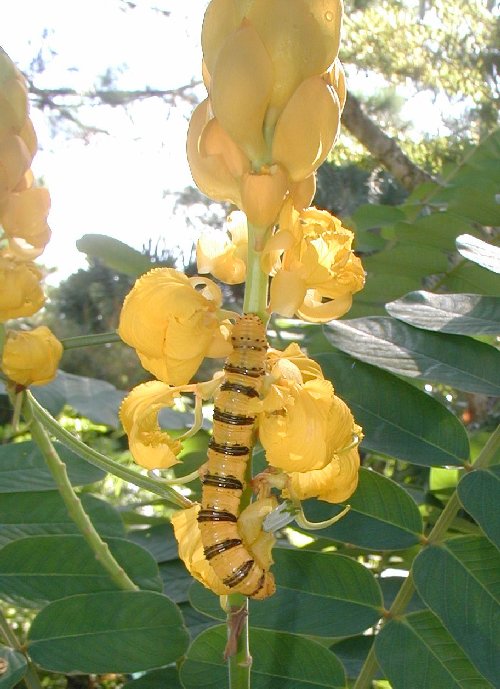
Having an undisturbed lunch on a Candlebush, or Cassia, is a lot easier if you blend in. |
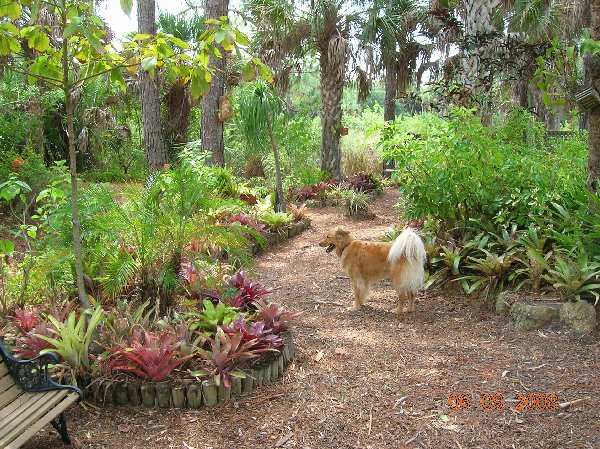
(RIGHT)
Taz leads the tour |
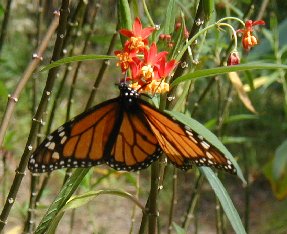
The Monarch butterflies love the scarlet milkweed Asclepias curassavica and the yellow milkweed, usually emerging from their cocoons in mid February |
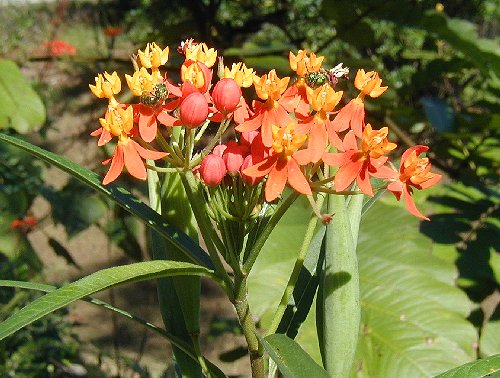
(RIGHT)
Small green wasps also love the Scarlet Milkweed Asclepias curassavica.
|
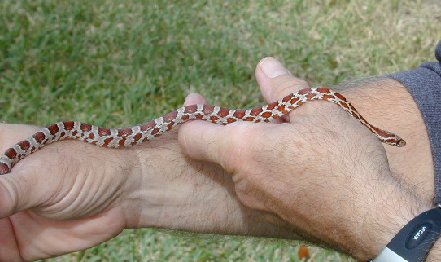
A small corn snake, one of the many varieties of non poisonous snakes found in our area.
Prudence and caution when working outside are always the way as Pigmy Rattlesnakes and even Eastern Diamondbacks are known to populate this part of Florida, though none have been found in our area. |
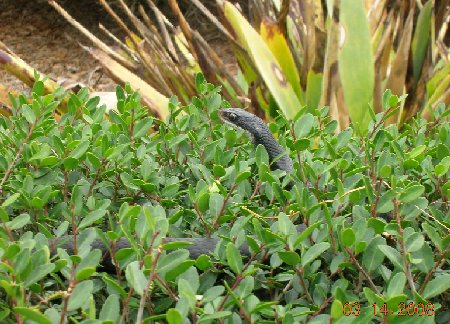
A harmless Black Racer looks for a common Bahamian Anole, a favorite snack.
|
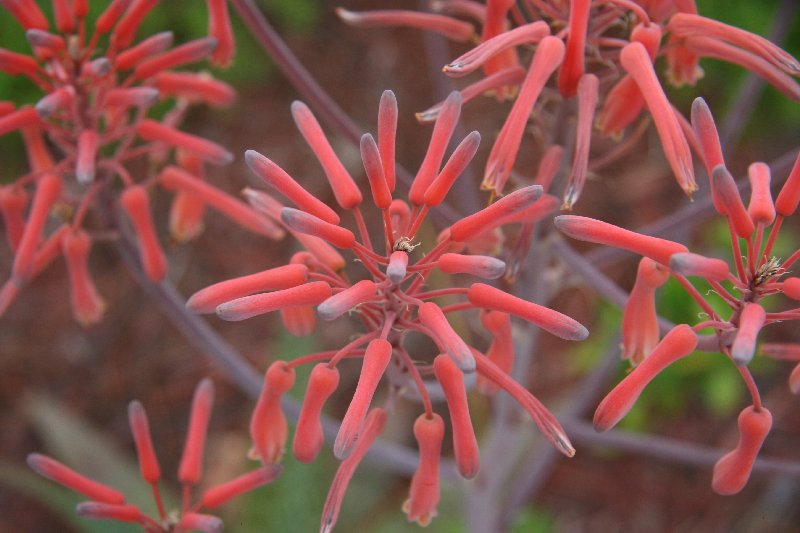 Another photo by Troy Heidesch, Aloe Variegata
|
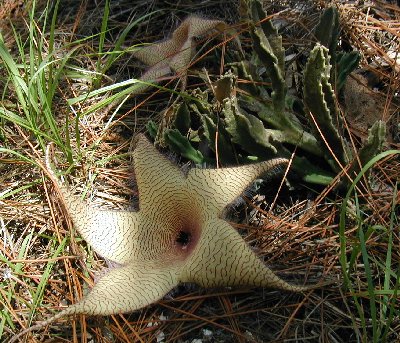
A Stapelia blossom. Also known as the carrion plant, this member of the milkweed family loves the side of the rock garden in the high shade. The blossom opens much like the paper "water bombs" we made in Junior High School!
This plant is not an indoor plant! |
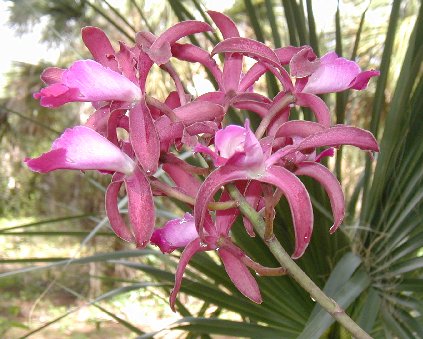
An orchid gets moved back to its summer location in the shade of the garden. The orchids are protected in the house or garage during the winter. |
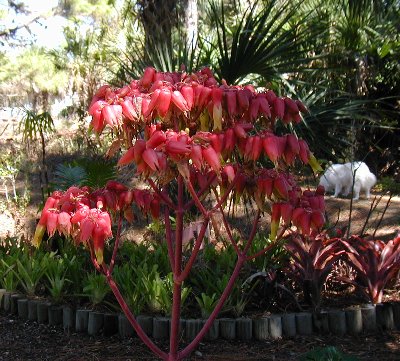
Another type of kalanchoe, Kalanchoe Daigremontiana, (Selby Gardens, Sarasota, Florida, lists this as a Kalanchoe Blossfeldians), shows its winter beauty. This one survived a night when temperatures were below freezing for over 6 hours, a temperature that normally ends the blooming of these plants. |
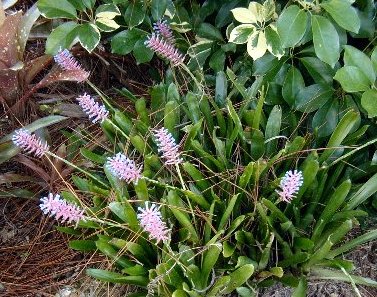
The Aechmea Gamosepala, a bromeliad that seems impervious to it's often inhospitable surroundings |
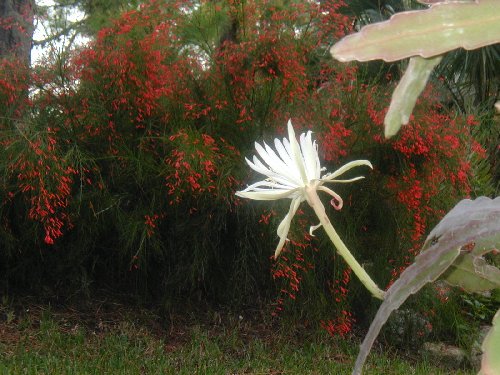 |
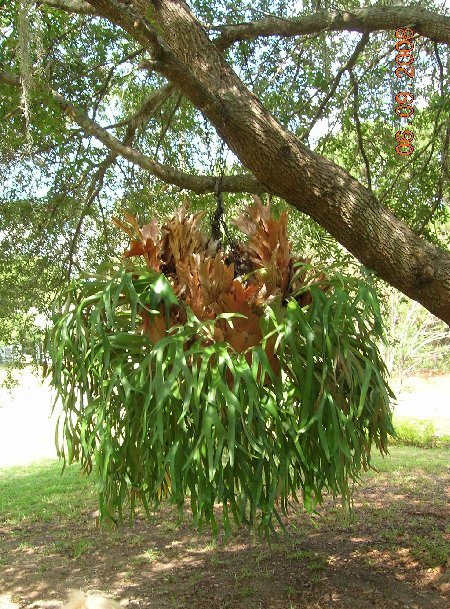
The center piece of the "sanctuary " is the 150 pound staghorn fern Placyterium Bifurcatum that we have had for over twenty five years. Currently suspended from a live oak after the very brittle wax myrtle that supported it for ten years finally had to be removed.
The Staghorn was the centerpiece plant of the garden until Hurricane Ian in 2022. The Staghorn was sold to a caring plant lover
|
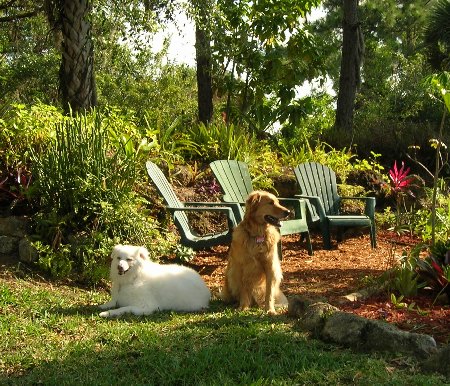
|
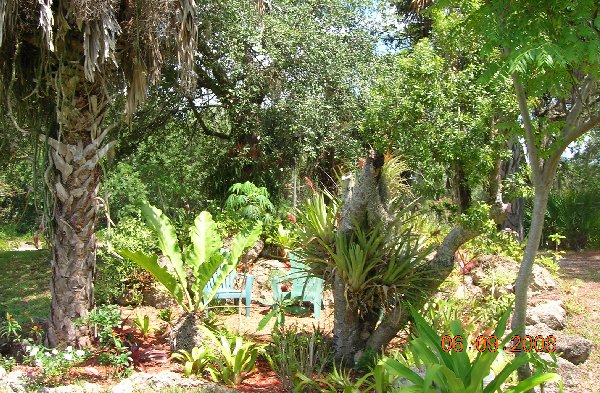
The "Sanctuary" area with the bird bath was created by digging a depression in the slope and moving 15 large coral rocks, most of them over 1000 pounds, to form a semi circle perimeter on the hill or back side of the wax myrtle. The decorative small coral rocks in front help define the sanctuary
The Wax Myrtle that dominated the area died and had to be cut back. The stump still houses several types of Tilandsia and bromeliads.
The water dish is for the raccoons, otherwise they destroy the bromeliads to get to the water in the cups during the dry season. |
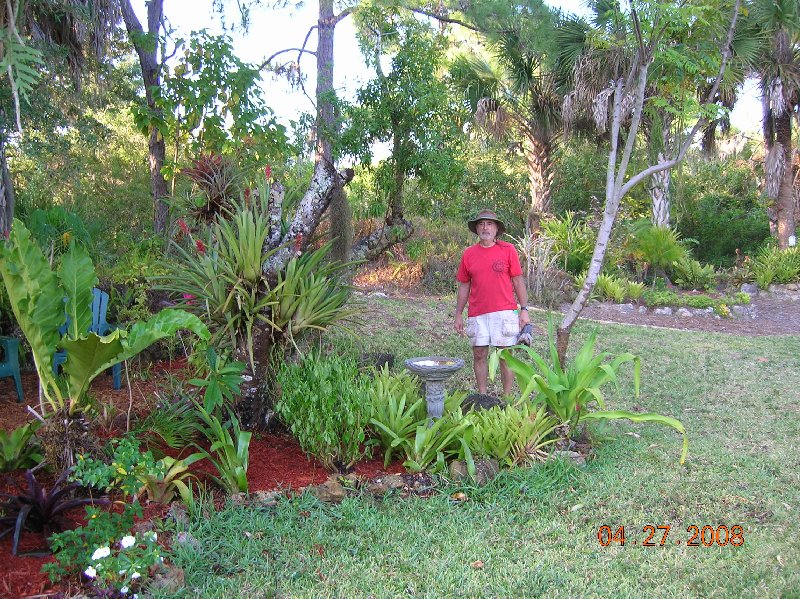
No keyboards, no power switches, no beeps or clicks, no reboots...
|
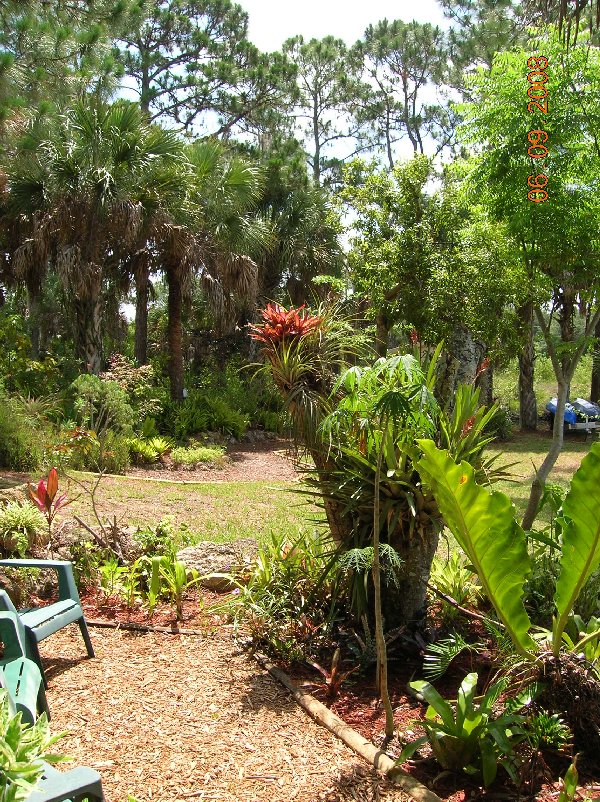
Only the high stump is left as a home for the broms and tilandsias after The Wax Myrtle is cut back and removed.
|
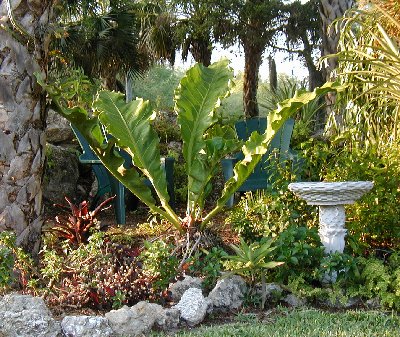
A Bird's Nest Antherium does well in high shade in the moist area of the "Sanctuary" |

The night blooming star of the "sanctuary" is this cactus, "Queen of the Night", Selenicereus Grandiflora. which shows this magnificent bloom in late May or early June.
The blooms usually appear in late May, so being prepared for mosquitos is the only way to enjoy this fleeting beauty. |
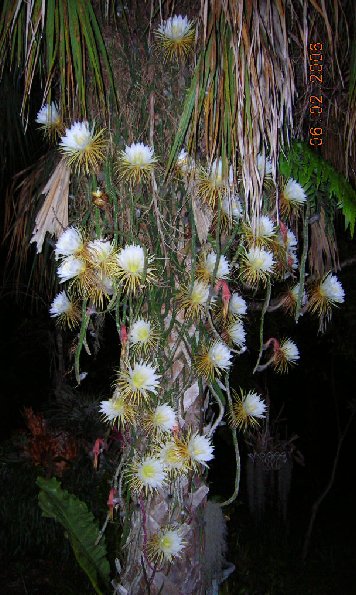
Take a look at our three minute You-Tube video of the Queen of the Night, taken in early June, 2009, at Queen of the Night Video.
The music is Aria de Amore by the Royal Philharmonic
This particular plant has no soil root, although not listed as a ephiphyte, it does quite well, thank you, without harming its hosts: One, a common Palmetto, the other a Slash Pine!.
An hour after sunrise, the flower wilts away, blooming only once.
|
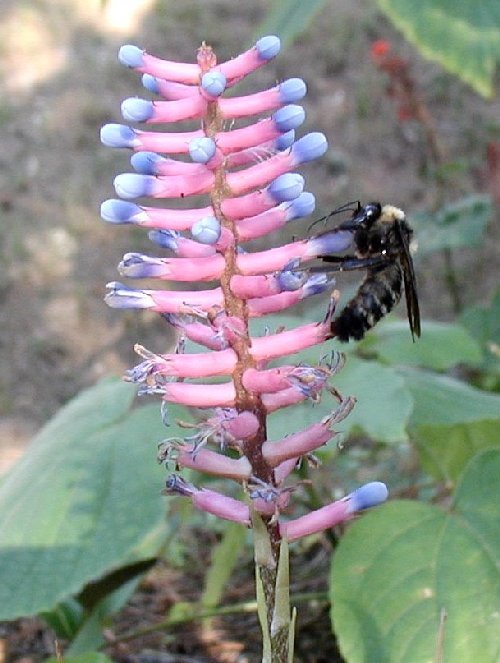
(RIGHT)
Aechmea Gamosepala
|
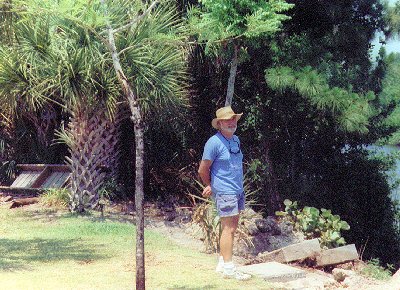 Our garden has taken five years to go from an overgrown, vacant lot, as seen in this early picture, to the garden that we now enjoy. Several Palmettos were removed, as well as many Brazilian Peppers. It took two double load dump trucks to remove all the cuttings and stumps. Two years later, a small bulldozer was brought in to move rocks, forming the "sanctuary," also known as the pit. A planned fish pond may eventually appear some day. Flowers and blooms come and go as the seasons change.
While we occassionally have no blooms or blossoms at all, all we have to do is be patient. We are always amazed at what decides to show up!
We hope you enjoyed this glimpse of our odd little garden...
Ilse and George
Northwest Port Charlotte, Florida
|
|